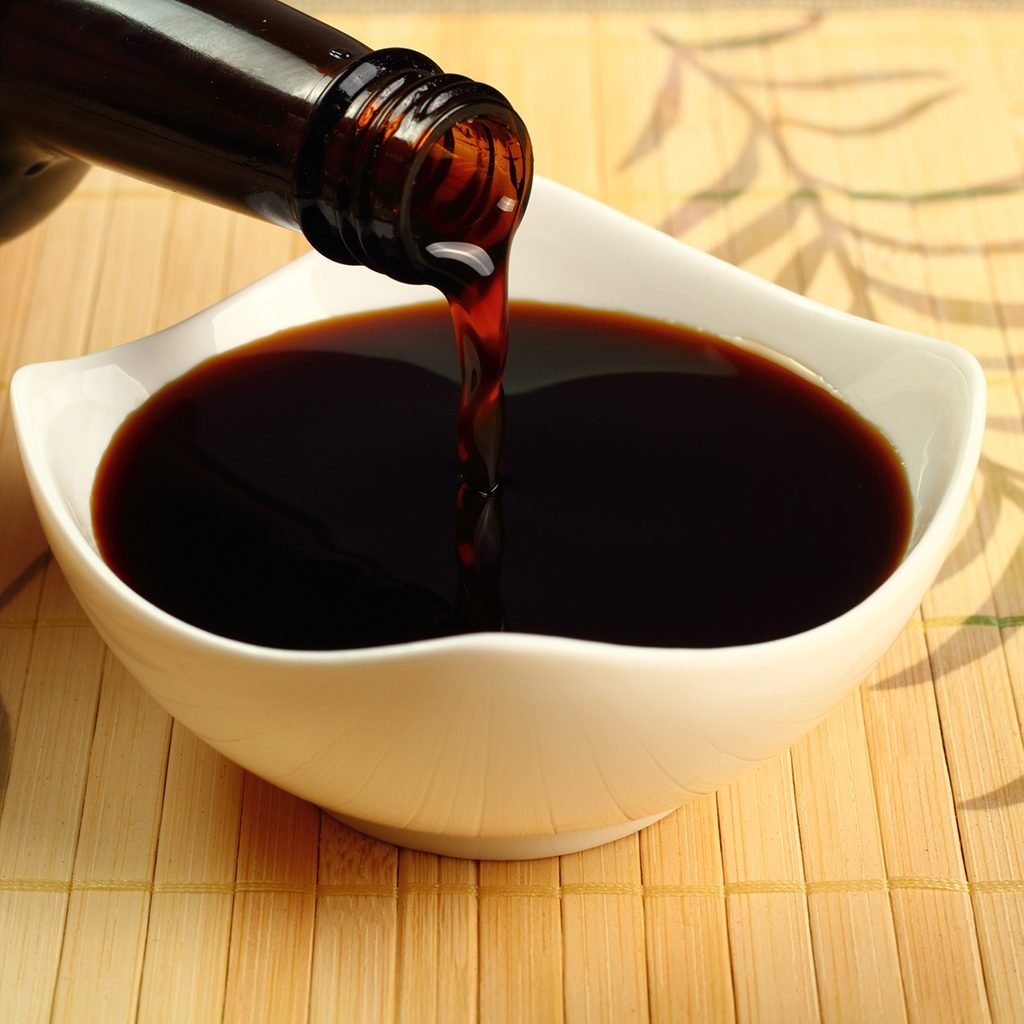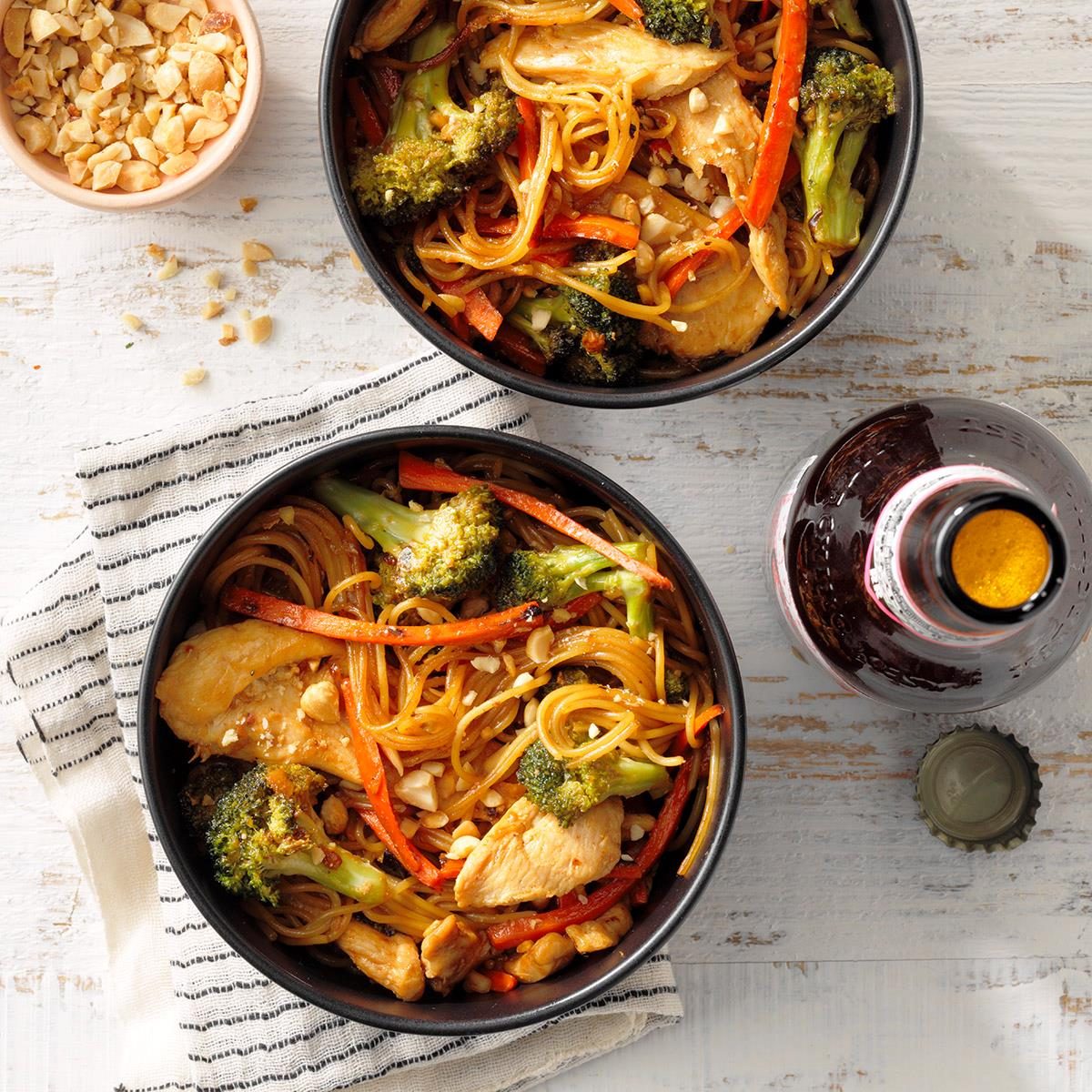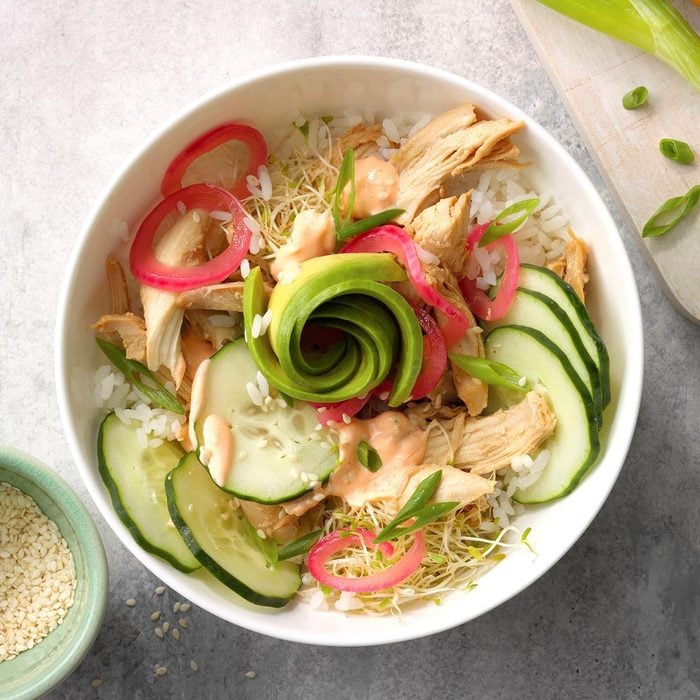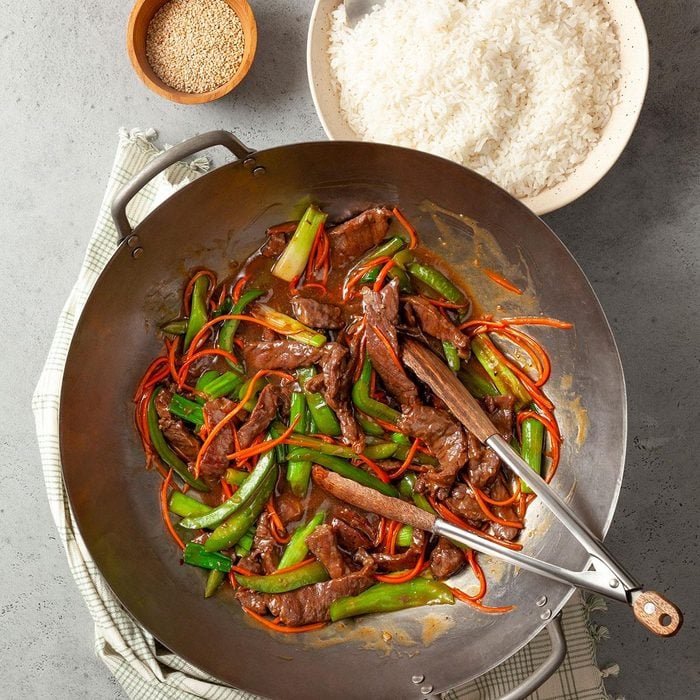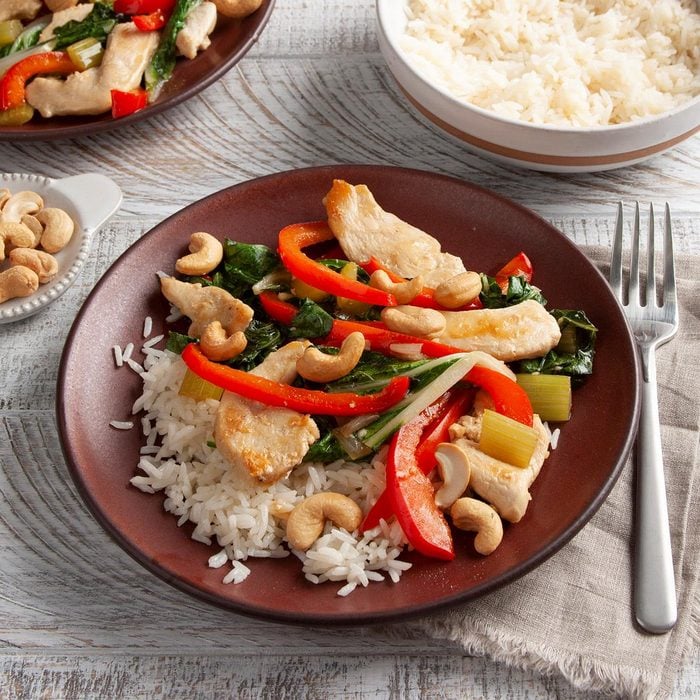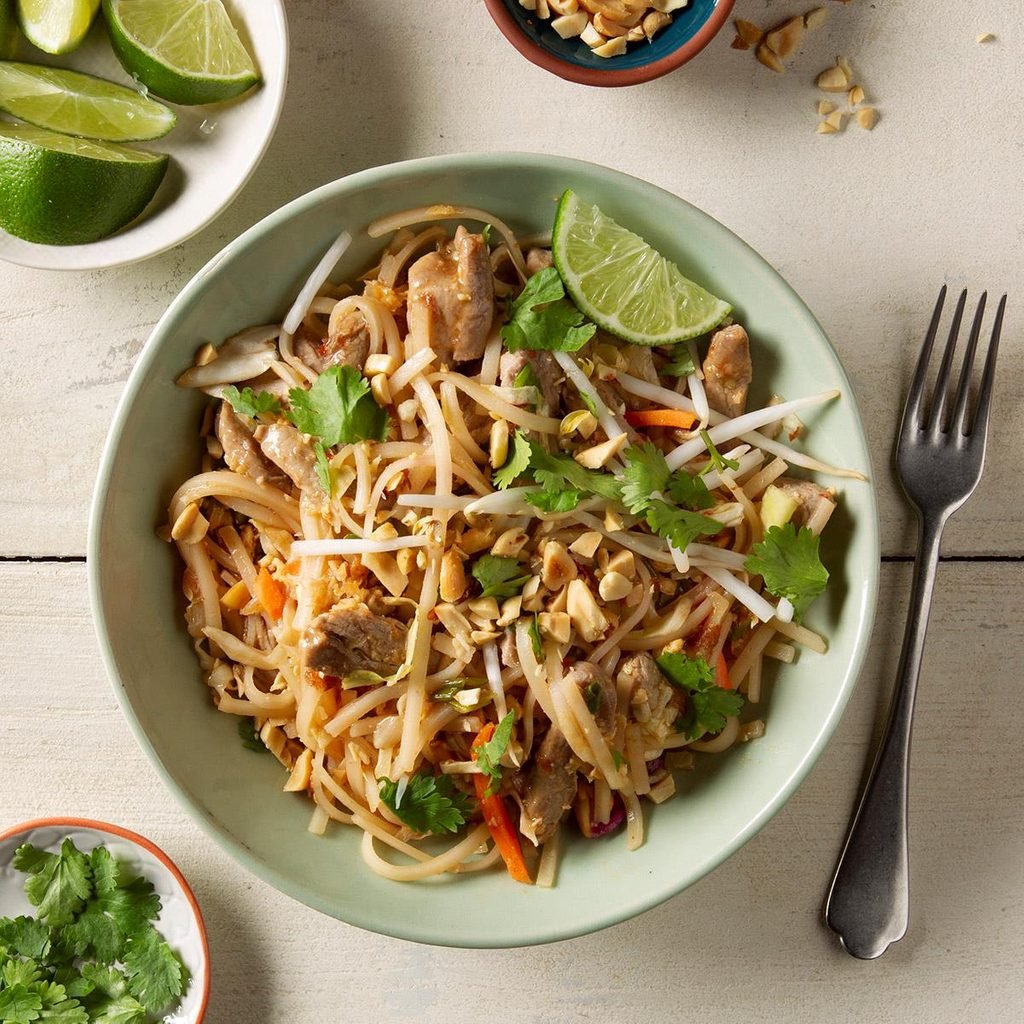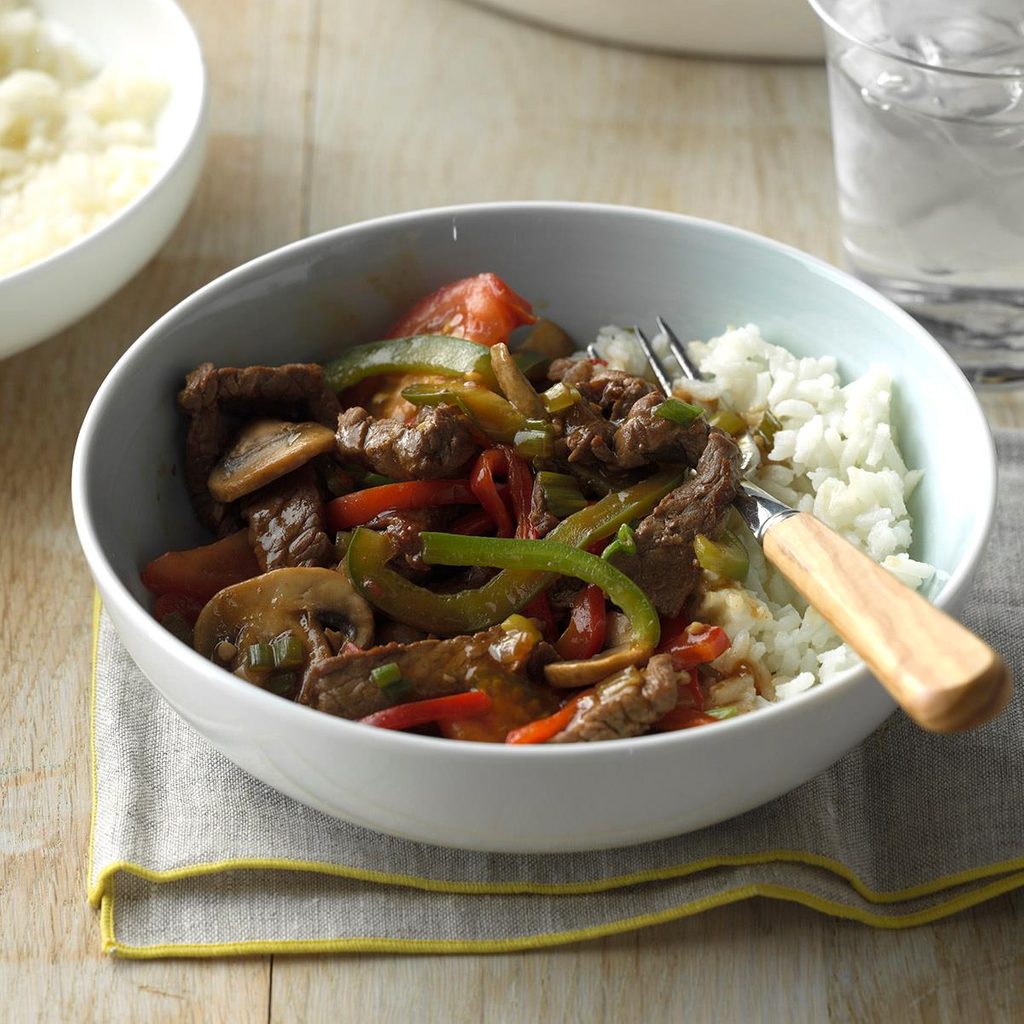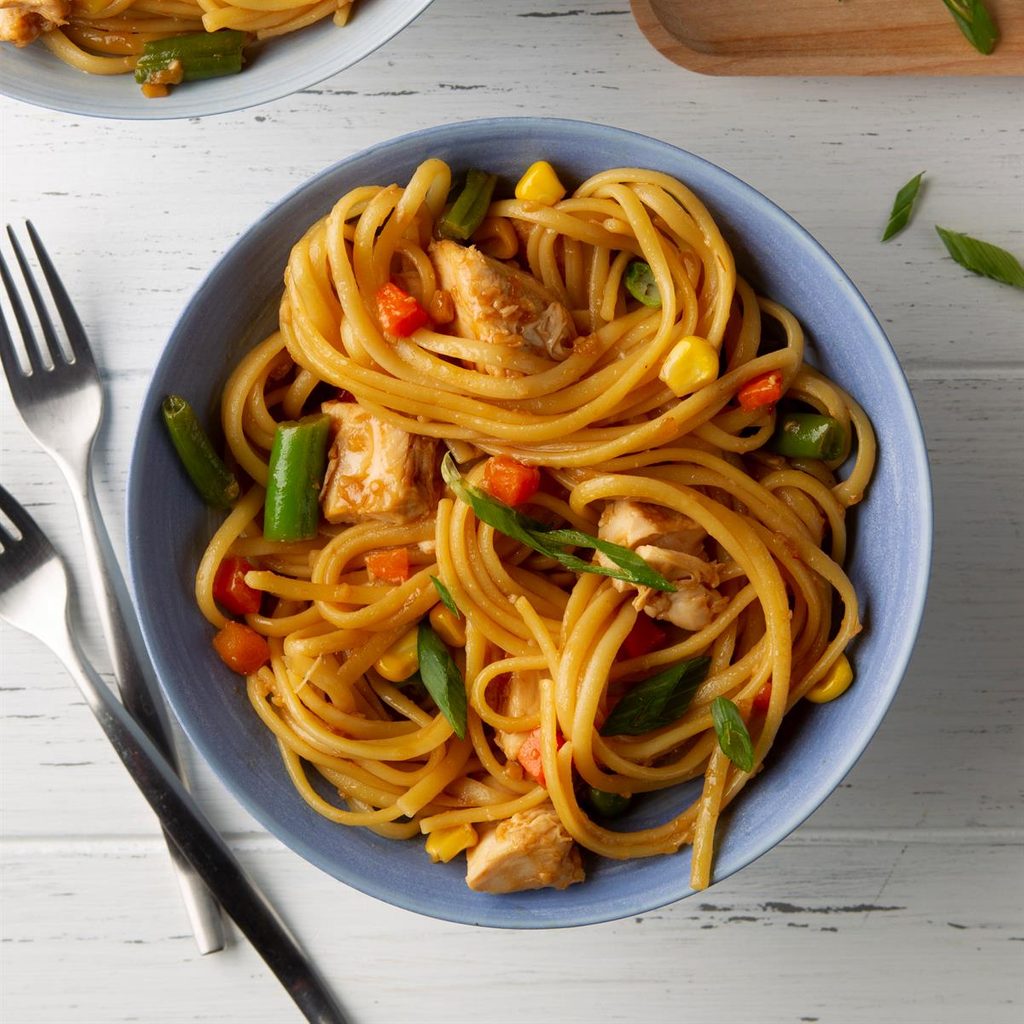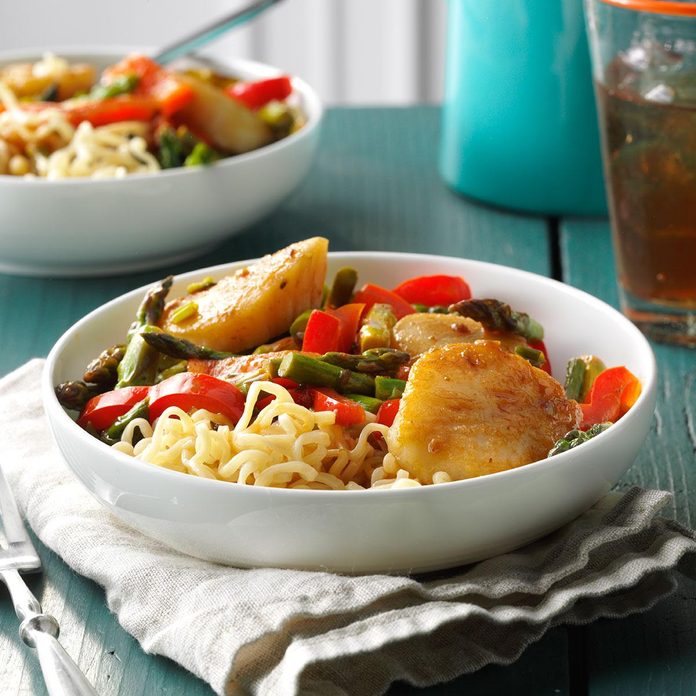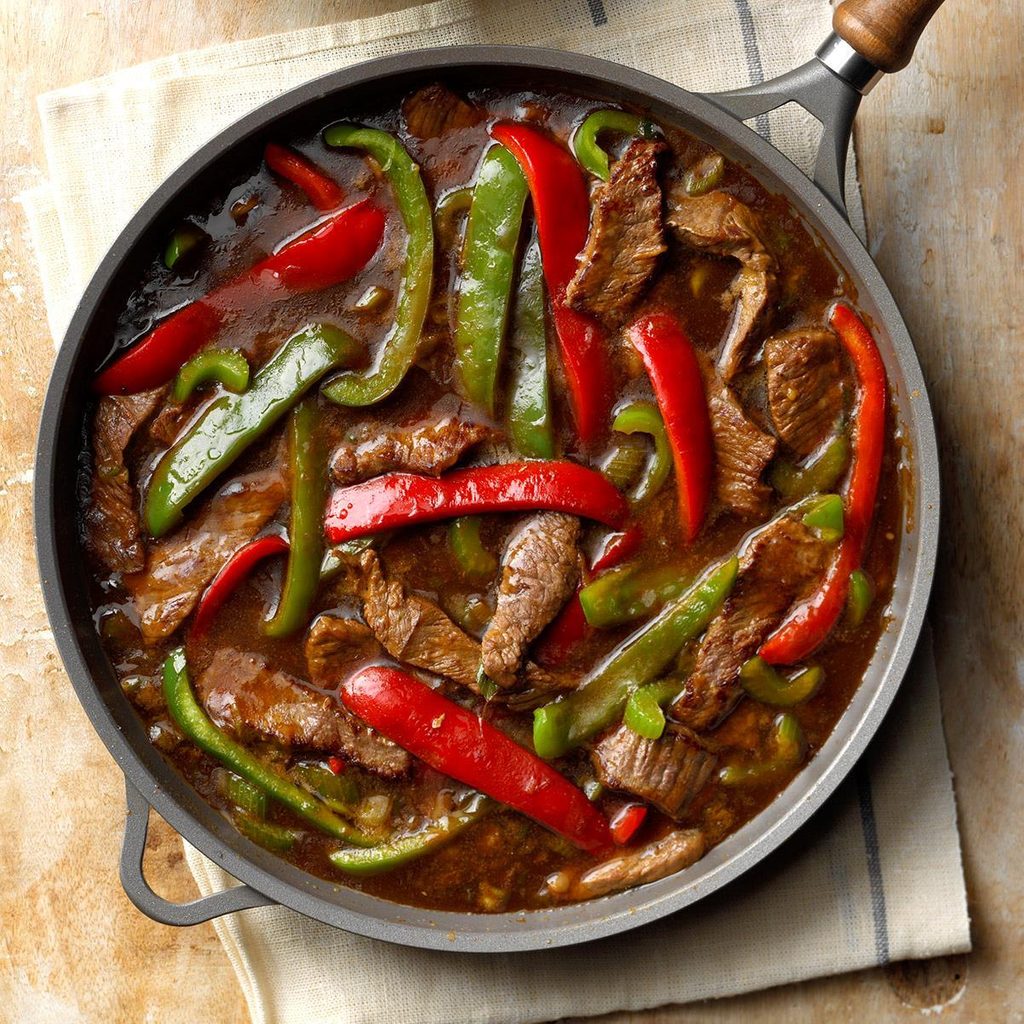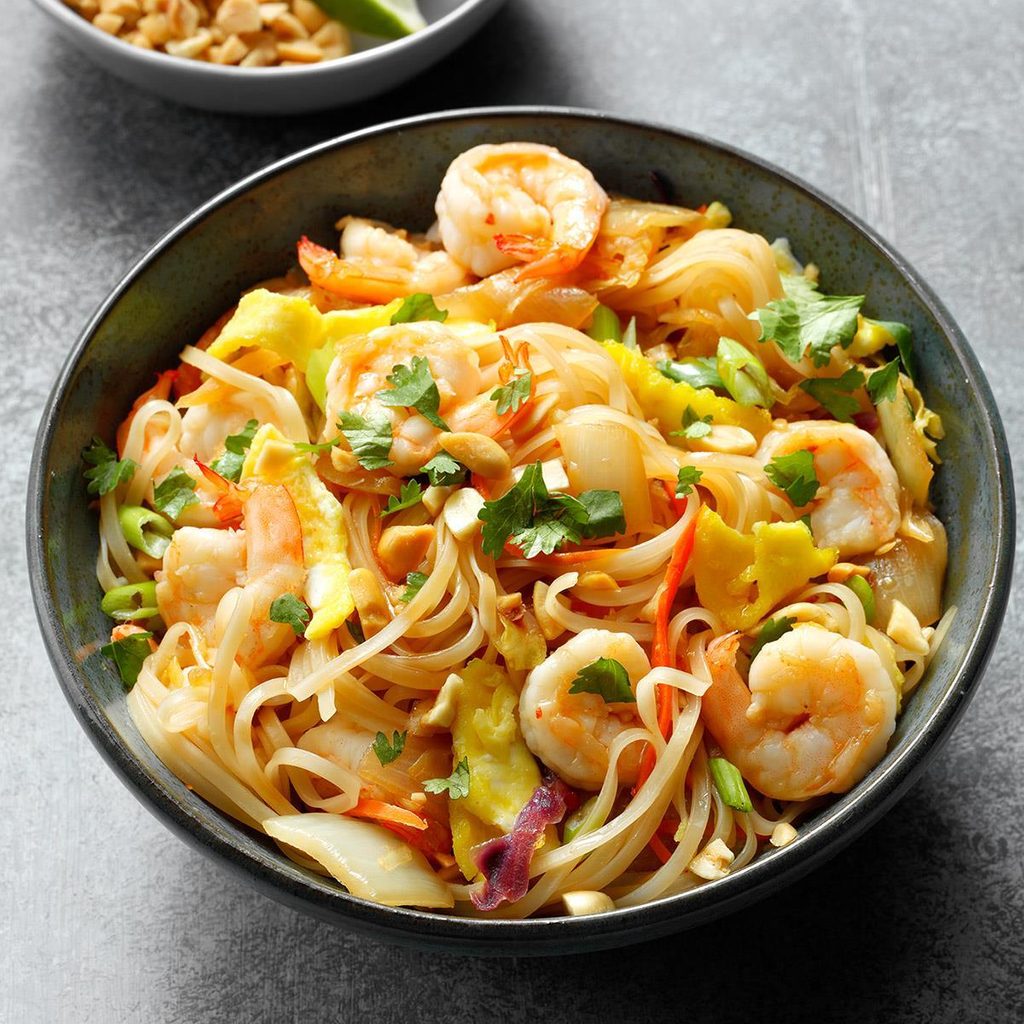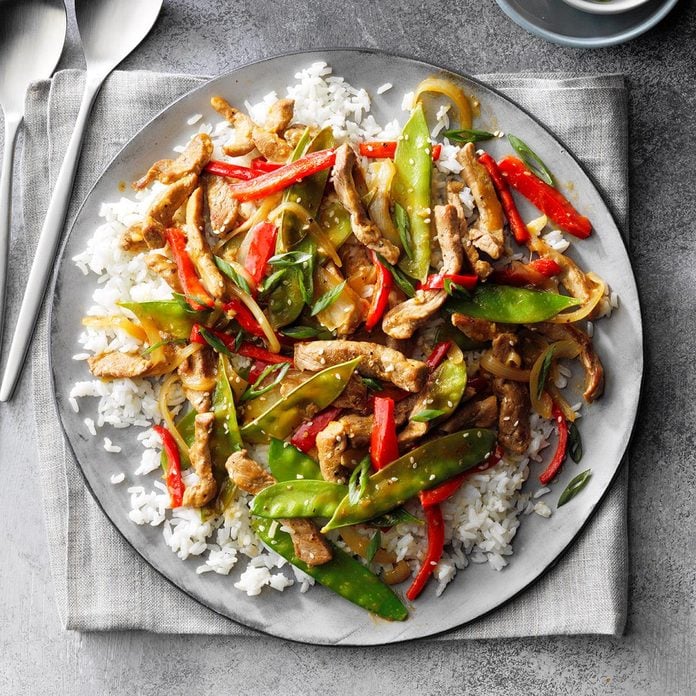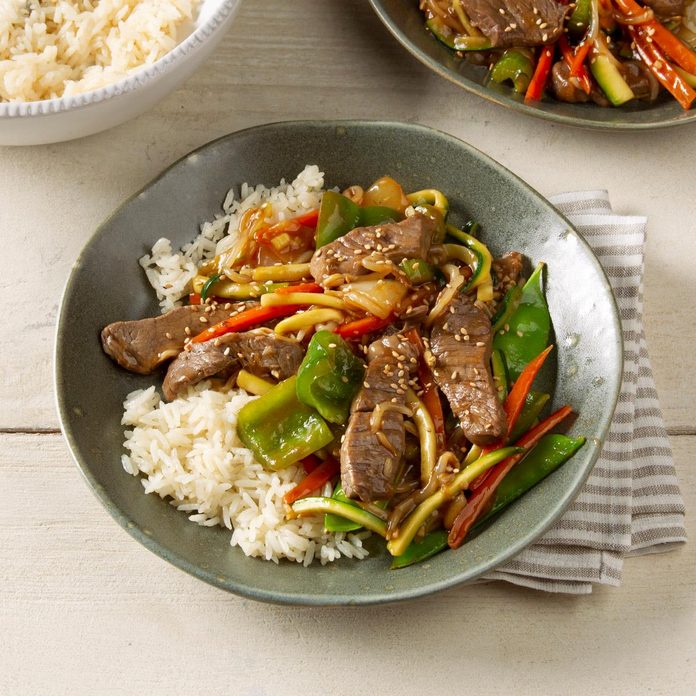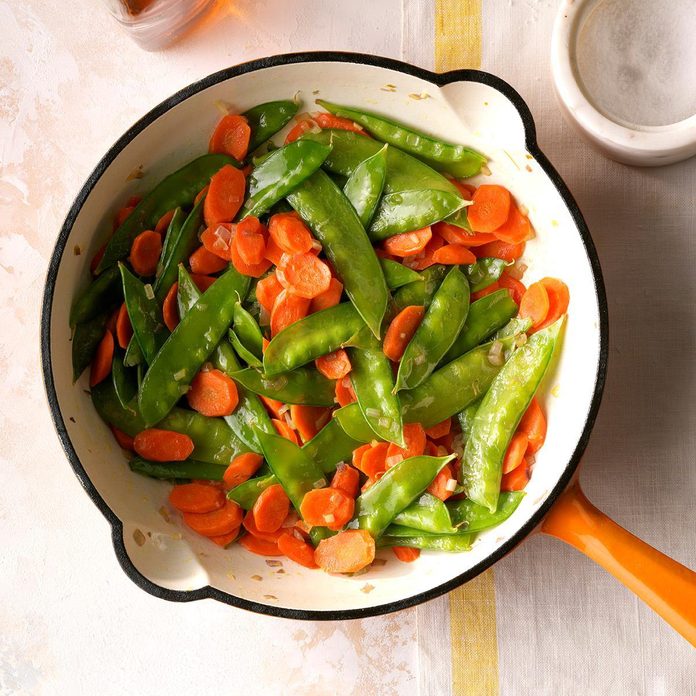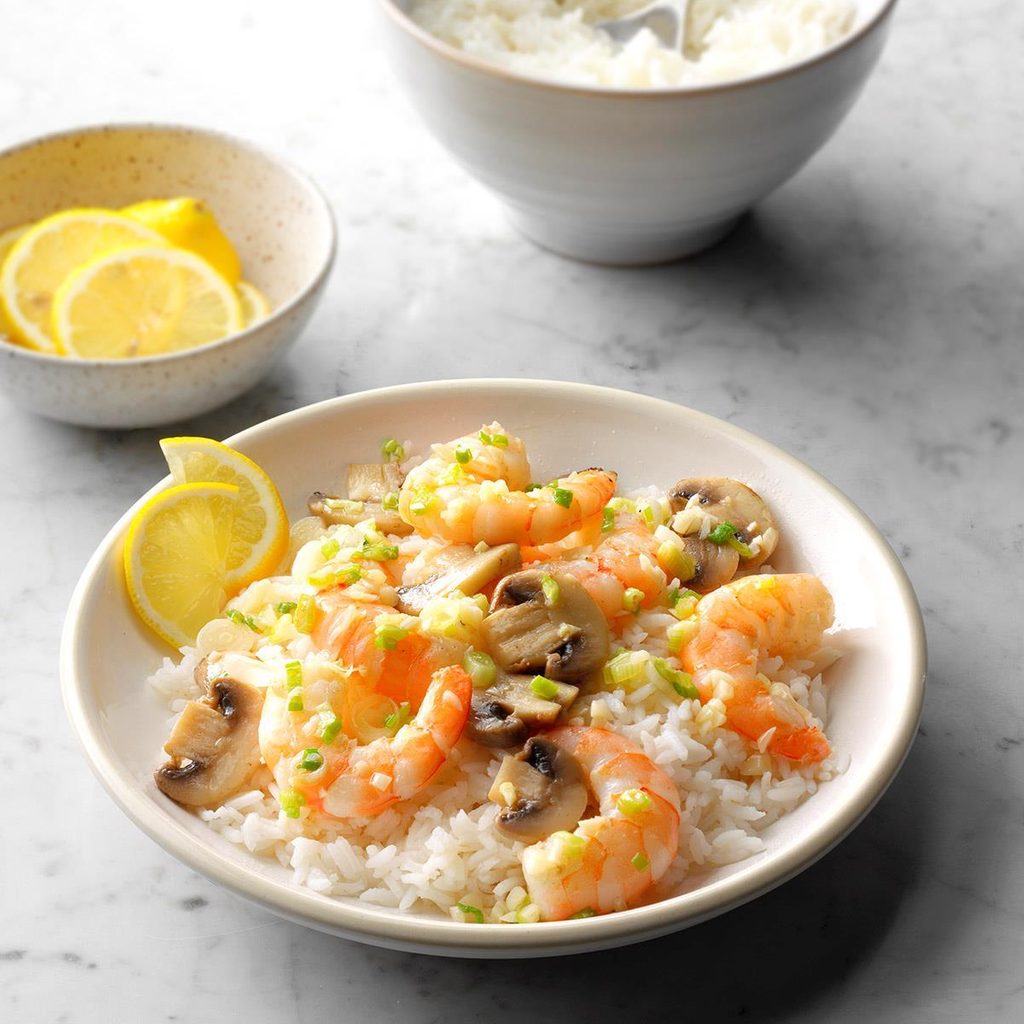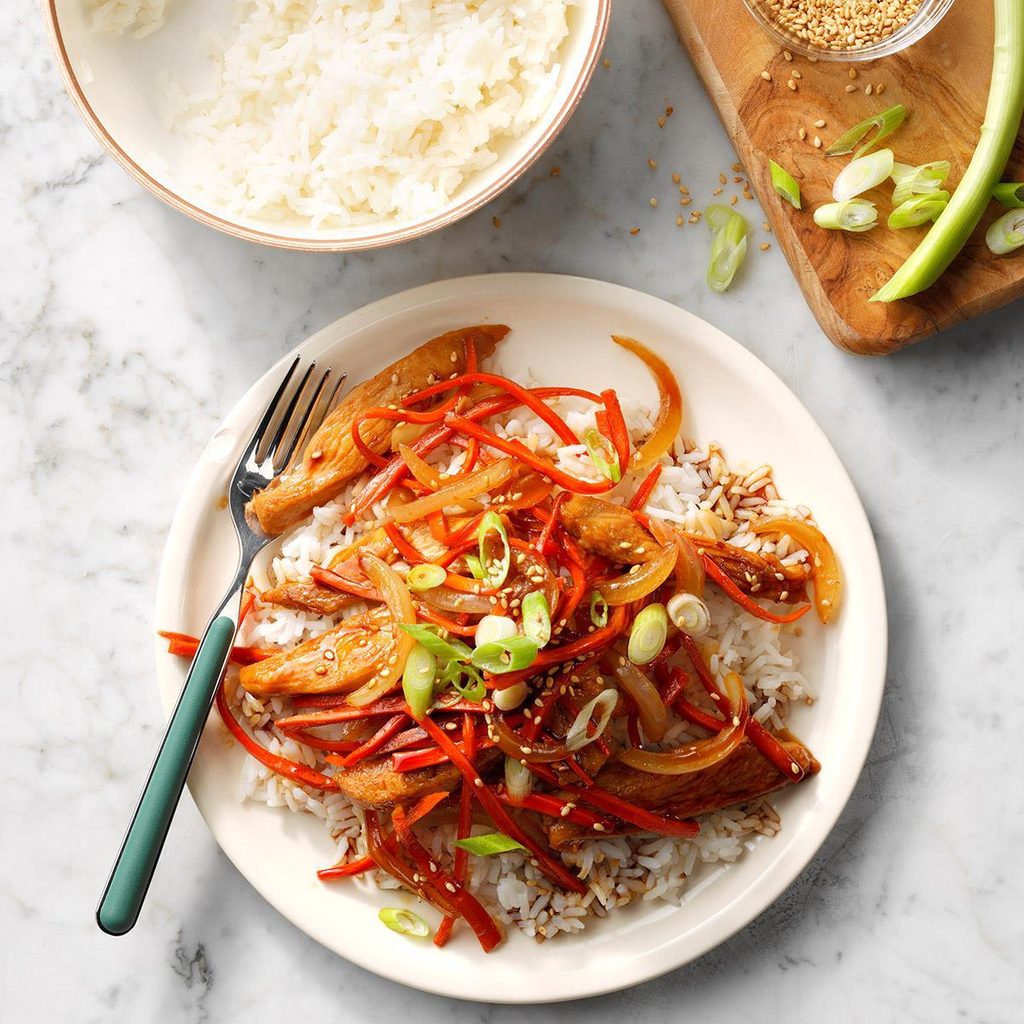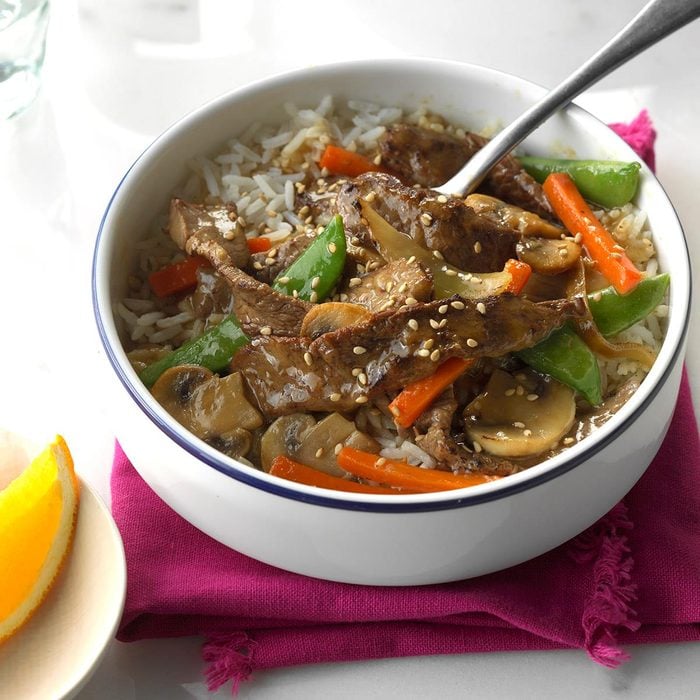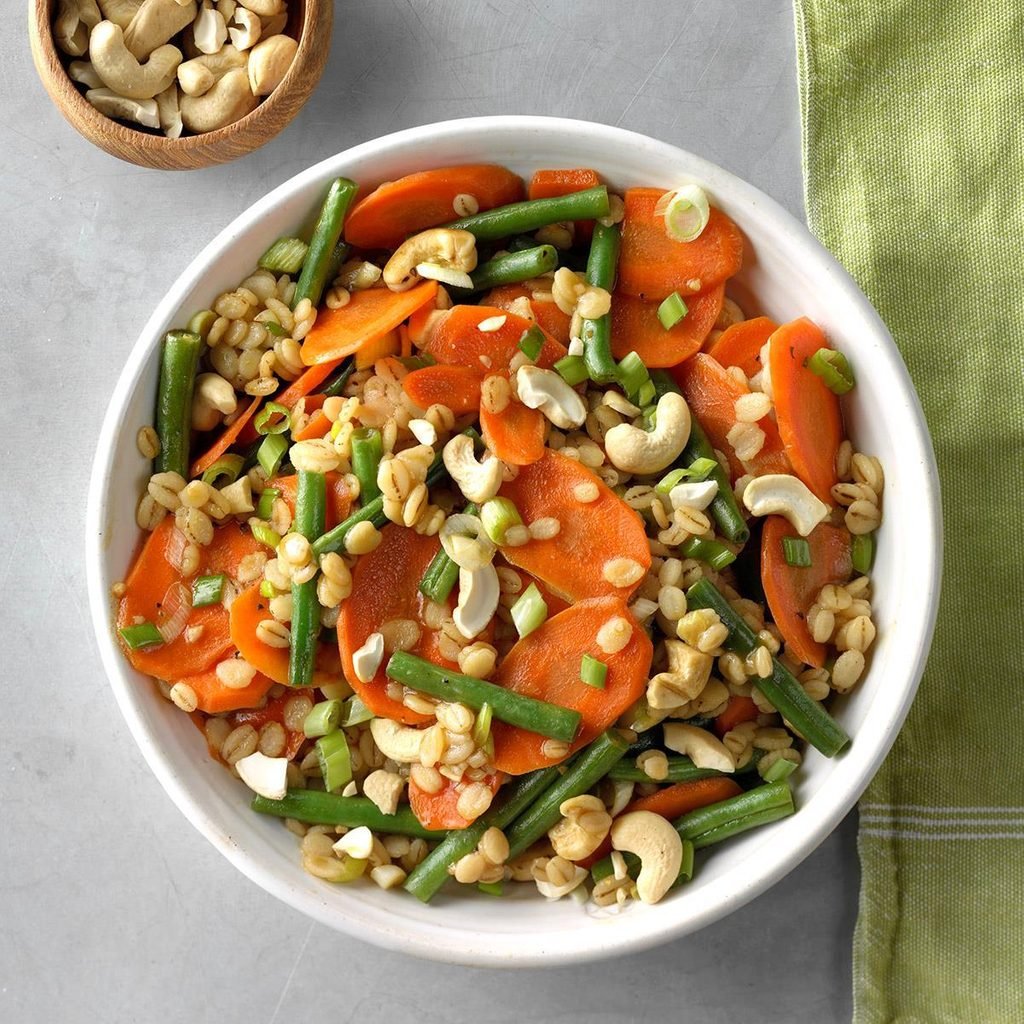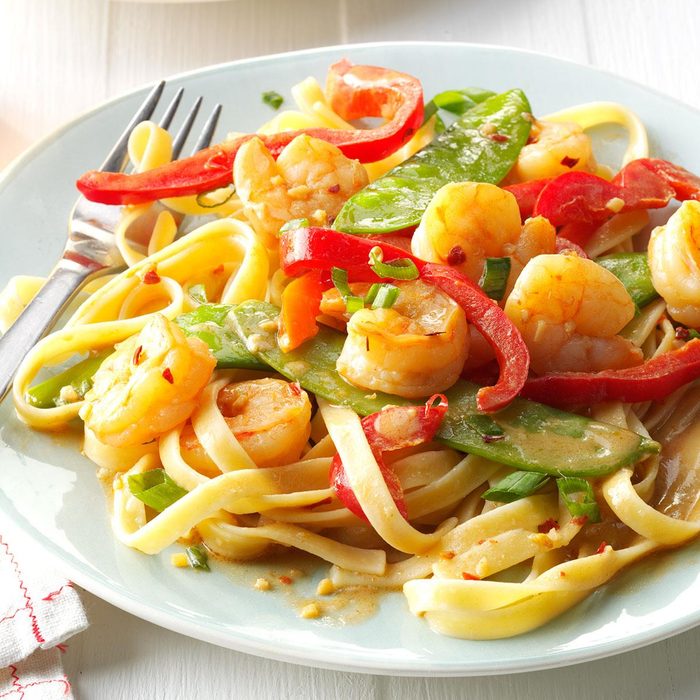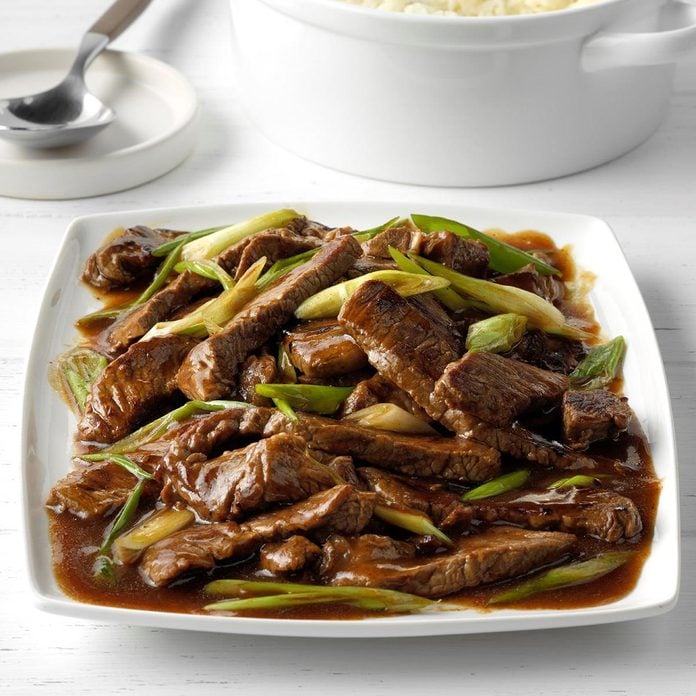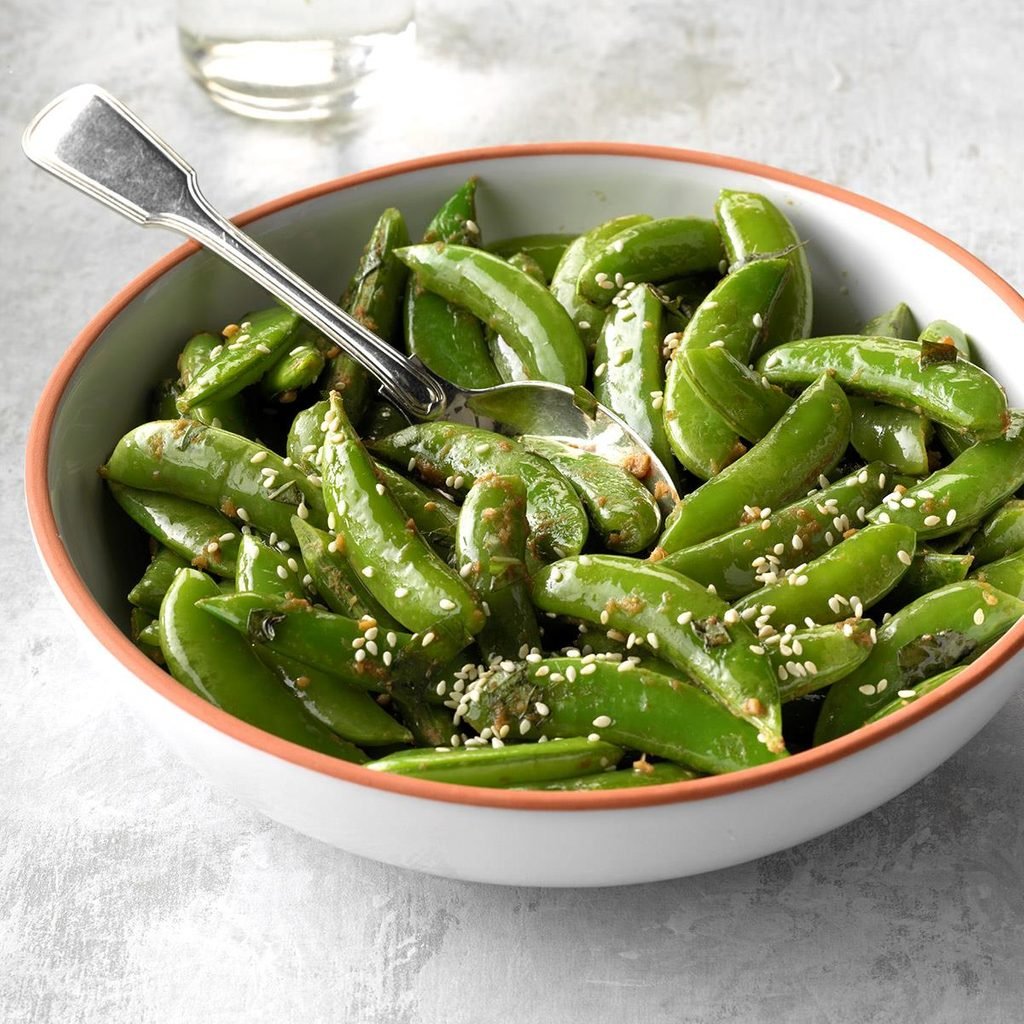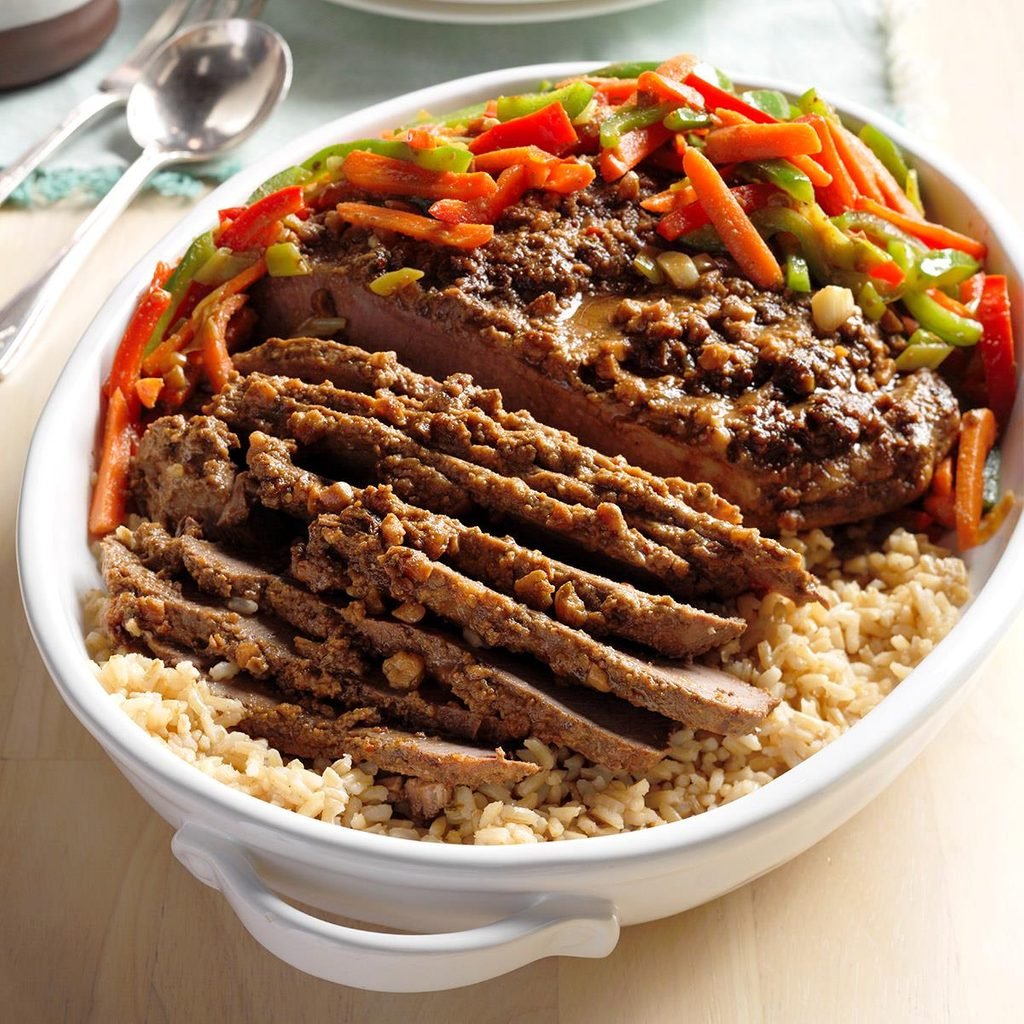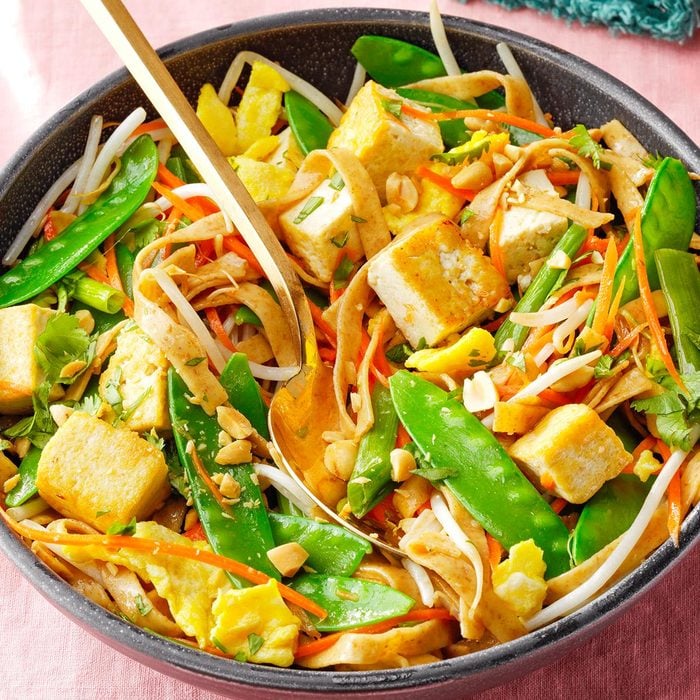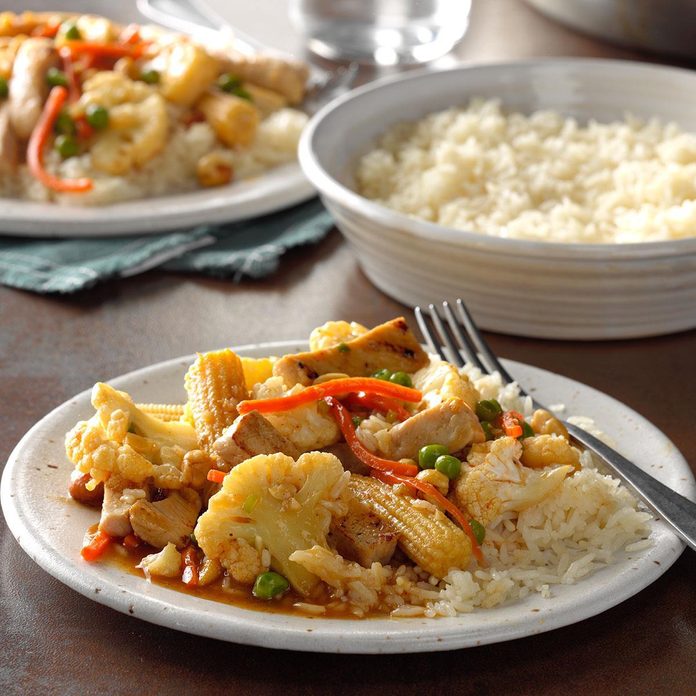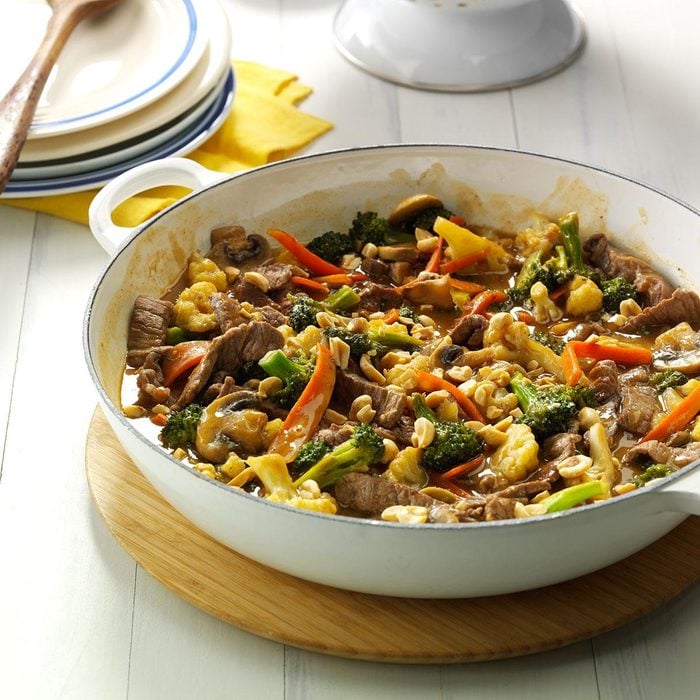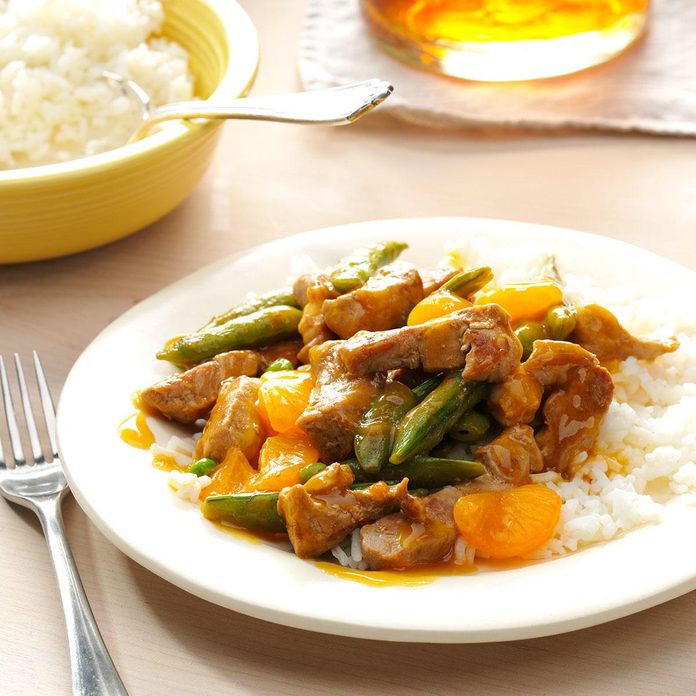Stir-Fry Chicken Lo Mein
This simple, yet scrumptious chicken lo mein recipe is the perfect stir-fry meal. It's one of our favorite wok recipes! Follow our handy step-by-step video below for a spur-of-the-minute supper special enough to serve guests! —Taste of Home Test Kitchen
Go to Recipe
For more, check out these authentic
Asian recipes.
Easy Fried RiceThis easy fried rice recipe really captures the flavor of fried rice served in restaurants. Use leftover chicken for a satisfying meal that's easy to put together. —Lori Schweer, Mapleton, Minnesota
Sweet-and-Sour PorkAfter my sister moved away to the university, I used to visit her on weekends. She often made this wonderful and tangy pork dish. Now, every time I make it for my family, it reminds me of those special visits. Everyone who tries it loves it. —Cherry Williams, St. Albert, Alberta
Learn
how to season a wok.
Quick and Easy Chicken Poke BowlThis chicken poke bowl is a great alternative when sushi-grade fish isn't in the budget. This is one of my favorite wok recipes because it's quick, easy and inexpensive. While it's not a traditional poke recipe, the chicken still rocks in this bowl. —Emily Cresta, Oxford, Ohio
These are the
best woks for your kitchen, according to our experts.
Steak Stir-FryNo one would guess this elegant entree is a snap to prepare at the last minute. To save even more prep time, use frozen mixed veggies instead of fresh. Sometimes I substitute chicken, chicken bouillon and curry for the beef, beef bouillon and ginger. —Janis Plourde, Smooth Rock Falls, Ontario
Cashew Chicken with Bok ChoyWith bok choy and red pepper, this light and lively entree is not only colorful but delicious as well. Your family will ask you to prepare it all year long! —Taste of Home Test Kitchen, Milwaukee, Wisconsin
If you love veggies, give these
bok choy recipes a try.
Grilled Zucchini Salad with Mediterranean DressingThis grilled zucchini salad with Mediterranean salad dressing is the perfect side dish. I also like to add summer squash, when it's in season, for a variation, or crumbled goat cheese when I want creaminess. —Rashanda Cobbins, Milwaukee, Wisconsin
Easy Pad ThaiSkip the takeout restaurant and give this easy pad thai recipe a try if you need an easy and quick meal. —Taste of Home Test Kitchen, Milwaukee, Wisconsin
Mushroom Pepper SteakBell peppers, mushrooms and ginger provide the bulk of the flavor in this stir-fry that’s not too saucy. Hot rice makes it even better. —Billie Moss, Walnut Creek, California
Sesame Chicken Stir-FryWhen our children were little, my husband frequently worked late. This eye-catching stir-fry was a satisfying alternative to a big dinner for me and the kids. —Michelle McWilliams, Fort Lupton, Colorado
Hamburger Stir-FryHere's a quick, easy teriyaki stir fry that uses hamburger instead of the traditional beef strips. It has a nice sauce and is different enough to be a treat for the taste buds! —Kathi and John Horst, Westfield, New York
Grilled Chorizo and Shrimp PaellaThis shrimp paella recipe is not only healthy but satisfying, too! There's vitamin C from the sweet red pepper, fiber from the rice, and the chicken sausage is a great source of lean protein. It's one of our must-try wok recipes! — Daniel Bartholomay, Fargo, North Dakota
Pineapple Pork Stir-FryThere's no need for takeout when you've got this pineapple pork recipe in your collection. Omit the cayenne pepper if serving young kids. —Taste of Home Test Kitchen, Milwaukee, Wisconsin
Quick Chicken Lo MeinI can throw this chicken lo mein together on a weeknight when my kids are doing their homework. It uses frozen veggies, which I always have on hand, so I don't need to run to the grocery store for ingredients. —Natasha Kennedy, Orlando, Florida
Stir-Fried Scallops and AsparagusServed over quick-cooking ramen noodles, this stir-fry is perfect for busy families on hurried weeknights. Not only do we love the taste, but it comes together in about half an hour. —Barbara Schindler, Napoleon, Ohio
Spicy Chicken Lettuce WrapsThis is one of my go-to meals when I want a fun dinner. I love the spicy Asian flavors against the cool lettuce and the added crunch of peanuts and water chestnuts. —Brittany Allyn, Nashville, Tennessee
Quick Pepper SteakWhen I need a speedy skillet supper, this pepper steak comes to my rescue. The tender meat is slightly sweet, with a hint of brown sugar and molasses. —Monica Williams, Burleson, Texas
Shrimp Pad ThaiYou can make this yummy Thai classic in no time. Find fish sauce and chili garlic sauce in the Asian foods aisle of your grocery store. —Elise Ray, Shawnee, Kansas
Ginger Pork Stir-FryMy recipe box is full of delicious wok recipes, but this fast-to-fix stir-fry really stands out from the rest. My family loves the citrus glaze that coats the tender pork and vegetables. Ginger, garlic and orange juice provide its terrific taste. —Jackie Hannahs, Cedar Springs, Michigan
Orange Chicken Stir-FryMy husband loves this orange chicken stir-fry, so we have it quite often. I'm delighted with the ingredients as we have six orange trees in our backyard. —Bunny Bronson, Lake Placid, Florida
Colorful Beef Stir-FryI really like this beef stir-fry recipe. Who couldn't love the easy sesame-ginger marinade and the vibrant mix of vegetables? —Deb Blendermann, Boulder, Colorado
Carrots and Snow PeasThis is without question my favorite side dish, both for flavor and ease of preparation. Sherry adds an amazing spark to the vegetables. —Cheryl Donnely, Arvada, Colorado
Stir-Fried Shrimp and MushroomsAfter a tiring but beautiful day of fishing, this is a fast and delicious way to serve our famous Key West pink shrimp. It's always a big hit with guests.
Teriyaki Glazed ChickenI love to experiment with wok recipes. We're able to buy sweet onions grown on Maui, so I stir-fry them with chicken and carrots for a tasty teriyaki meal. —Kelly Brenneman, Riverdale, California
Beef Orange Stir-FryThis dinner for two is loaded with lots of flavor and color. Red pepper flakes add a little kick to the orange beef sauce, and the tender veggies add a pop of color. — Taste of Home Test Kitchen
Pork Cabbage Stir-FryThe ginger comes through nicely in this colorful napa cabbage stir-fry that is lower in fat and sodium than many. It's great served over steamed rice or cooked noodles. —Marcie Nor of Macungie, Pennsylvania
Kung Pao ChickenMy family loves the kung pao chicken from our favorite Chinese restaurant. But in less time than it takes for the delivery guy to arrive, we can be digging into a steaming platter of this copycat recipe! —Jennifer Beckman, Falls Church, Virginia
Vegetable Barley SauteThis wonderful side dish can easily be turned into a hearty entree by adding cooked chicken. —Taste of Home Test Kitchen
Thai Shrimp Stir-FryPeanut butter gives this tasty blend of red peppers, snow peas and shrimp its Thai flavor, while ginger and red pepper flakes spice it up. Serve this colorful main dish over pasta. —Jeanne Fisher, Simi Valley, California.
Mongolian BeefMy family—including my husband, who is truly a meat-and-potatoes guy—just loves this meal-in-one option. The dish uses inexpensive ingredients to offer big flavor in a small amount of time. —Heather Blum, Coleman, Wisconsin
Stir-Fried ScallopsScallops meet mild tomato in this sublime stovetop supper. Try serving the saucy mixture over rice or angel hair pasta, and garnish with cilantro if you like. —Stephany Gocobacki, San Rafael, California
Sugar Snap Pea Stir-FryFresh ginger, balsamic vinegar, soy sauce and sesame oil provide a nice blend of flavors in this Asian-inspired recipe for fresh sugar snap peas. This quick-to-cook recipe will complement most any entree, including ham, lamb, chicken or fish. Best of all, it's easy to double for large crowds. —Taste of Home Test Kitchen
Asparagus Tofu Stir-FryWith its flavorful ginger sauce and fresh vegetables, this tasty dish is a favorite. I get rave reviews every time I serve it, and it doesn’t bother my husband’s food allergies. Check out our guide if you’re
new to tofu. —Phyllis Smith, Chimacum, Washington
Thai-Style BrisketHere's an unusual take on brisket that will have you hooked. Peanut butter, soy, crisp-tender veggies and zesty seasonings give it the authentic Thai flavor we crave. —Teri Rasey, Cadillac, Michigan
Vegetable Pad ThaiClassic flavors of Thailand abound in this fragrant and flavorful dish featuring peanuts, tofu and noodles. New to tofu? It gives the entree its satisfying protein, for a delicious way to introduce it to your diet. —Sara Landry, Brookline, Massachusetts
Pork Veggie Stir-FryEven kids find this colorful combo of vegetables, pork strips, seasonings and peanuts very appealing. Serve it over rice for a main dish that needs no sides.
—Laurel Reisinger, Saskatoon, Saskatchewan
Thai Beef Stir-FryA distinctive peanut sauce complements this colorful combination of tender sirloin strips, cauliflower, carrots, broccoli and mushrooms. I like to dish it up over spaghetti, but you could use fried noodles instead. —Janice Fehr,
Austin, Manitoba
Mandarin Pork Stir-FryWhen my husband and I were dating, he told me he liked Asian food. I got a wok and discovered the joy of wok recipes like this pork stir-fry. —Laurie Martignon, Niagara, Wisconsin
